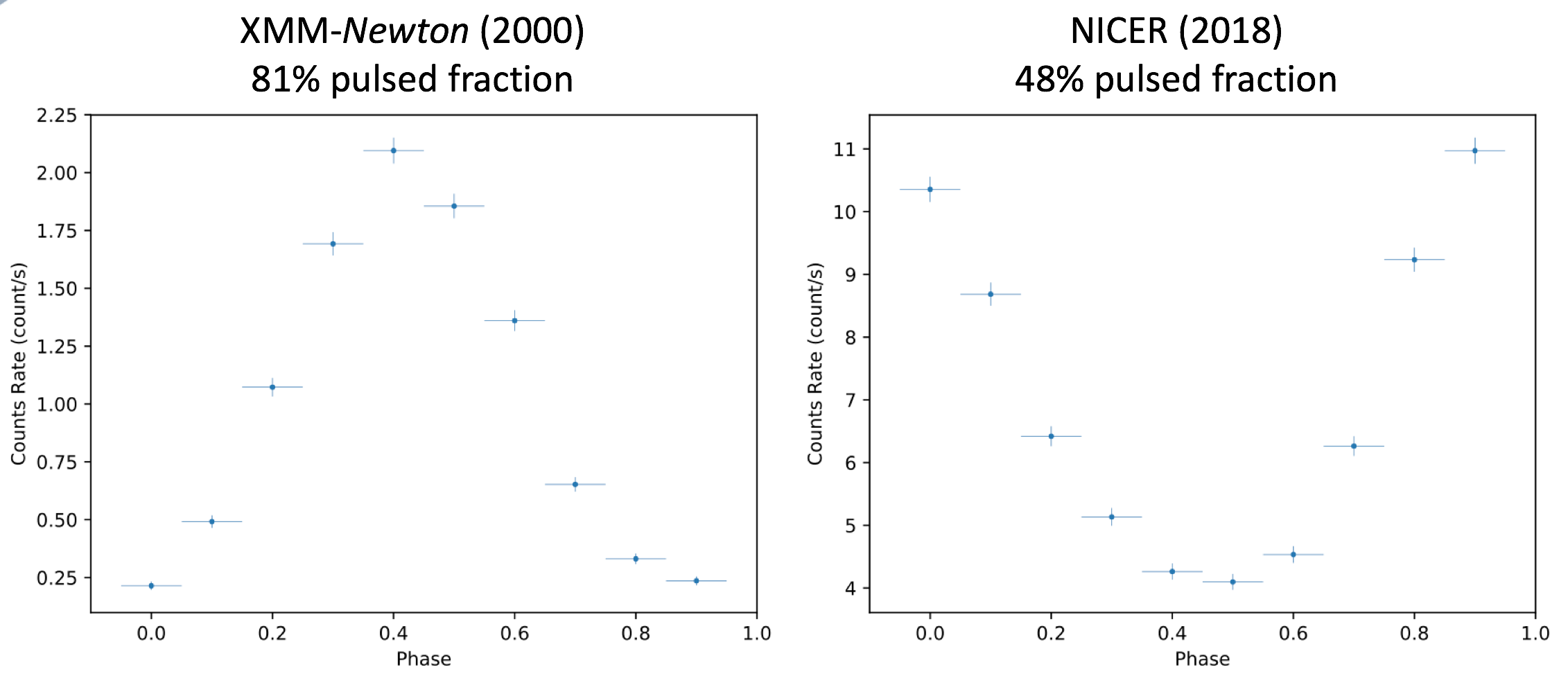NICER / ISS Science Nugget for March 1, 2018NICER detects changes in magnetar 1E 1048.9-5937Anomalous X-ray pulsars, a.k.a. magnetars, are a small group of neutron stars that are thought to possess the strongest magnetic fields in the Universe, on the order of 1014 Gauss. (The Earth's magnetic field strength is about 0.5 Gauss.) This magnetic field has profound effects on the matter near the surface of a neutron star as well as on the propagation of radiation from the surface – chiefly, the magnetic field's slow decay heats the star's crust at the magnetic poles and leads to X-ray emission. 1E 1048.9-5937 is a persistently bright magnetar, approximately 30,000 light years from Earth. It was one of the first sources discovered and identified as a magnetar candidate. It is also a highly active source in X-rays, with several known outbursts, sudden flux increases lasting a few weeks to months. Previous studies hinted that the reason this source shows outbursts is that the X-ray emitting area on the surface enlarges without a significant change in temperature, which can be understood in terms of energy release from the star's inner crust. Recently, magnetar 1E 1048.9-5937 exhibited another outburst, which was detected by NASA's Gehrels Swift observatory. NICER performed follow-up observations within a few days of the initial Swift report, and thanks to its much larger effective photon collecting area it was possible to extract high quality spectra and test the prior suggestion of an increased hot-spot size. We analyzed X-ray spectra obtained at several epochs, including an XMM-Newton observation from 18 years ago, and showed that indeed the area on the surface of the neutron star emitting in X-rays enlarged by a factor of two (from 1.9 to 3.9 km in radius, assuming the above distance), without a significant change in other parameters of the system. This is also confirmed with NICER's timing capabilities, via measurement of the pulsed fraction, the ratio of how much of the observed emission is pulsed vs. unpulsed. Pulsed photons are those from the surface hot spots, and because of the rotation of the object they show brightness modulations with the spin period whereas the unpulsed emission comes from the cooler areas on the surface. NICER observations revealed that the fraction of the pulsed emission decreased (see figure below), which again can be interpreted as an enlargement of the hot spot, with this emission becoming more nearly isotropic so that the observed modulation is decreased. These observations showed the effectiveness of having a large photon collecting area X-ray detector on-board ISS, which allows astronomers to easily perform Target of Opportunity observations and obtain high quality data within relatively short exposure times. NICER
|



